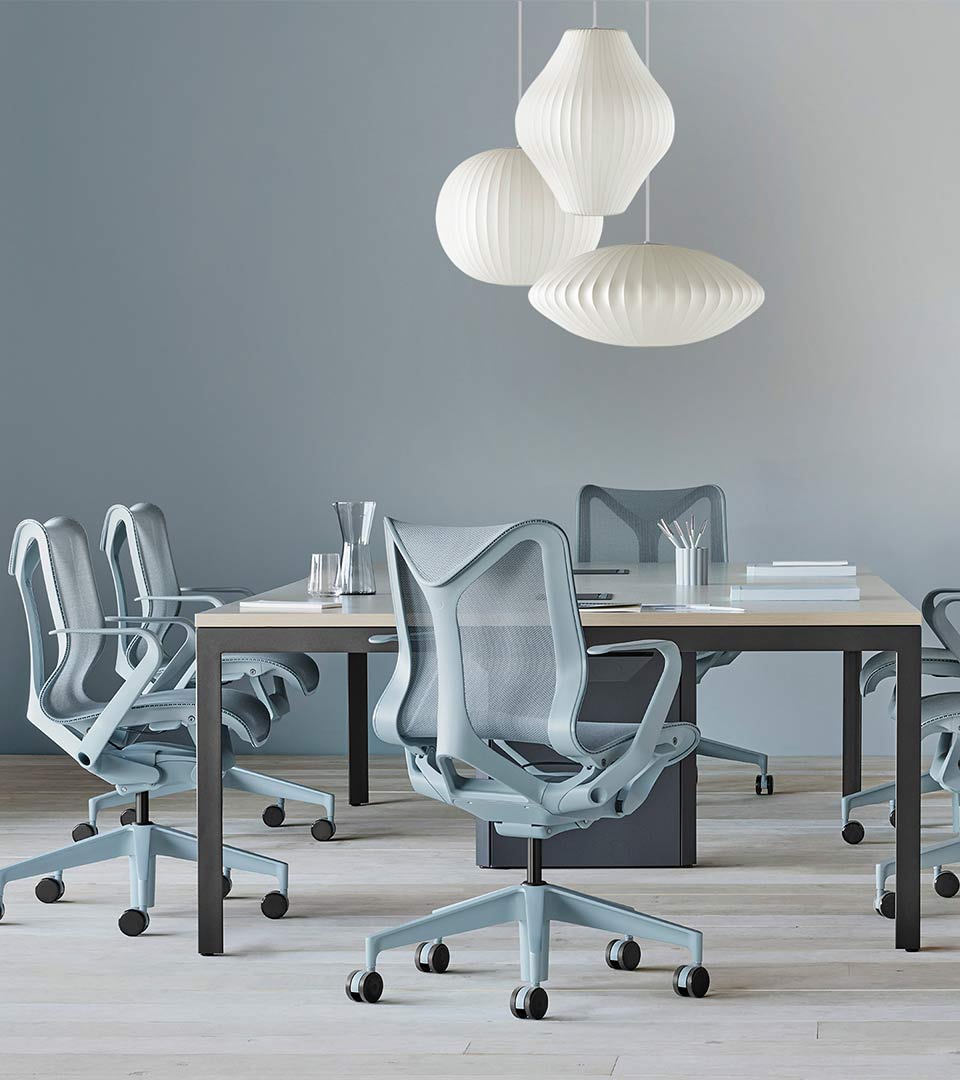Jean Prouvé was an engineer, designer and constructeur whose structural approaches had a decisive influence on the furniture design of inter- and post-war modernism.

In close cooperation with the Prouvé family, selected Prouvé designs finally went into series production in 2002 with the aim of making these somewhat forgotten products accessible again to a wider public. In autumn 2022, Vitra is expanding the palette for Jean Prouvé's furniture to include some of the original Prouvé colours: the existing options of deep black, Japanese red and Blanc Colombe (Ecru) will be joined by Gris Vermeer, Bleu Dynastie, Blé Vert and Bleu Marcoule, as well as the Métal Brut variant in unpainted steel. At the same time, Vitra is reissuing four designs by Jean Prouvé: Abat-Jour Conique, a conical lamp shade that Prouvé developed in 1947 for the wall lamp Potence, the two stools Tabouret N ° 307 and Tabouret Métallique as well as the wall-mounted shelving unit Rayonnage Mural, which Prouvé designed in 1936 for the Ecole Nationale Professionelle in Metz among many other public commissions from schools, universities, and hospitals.
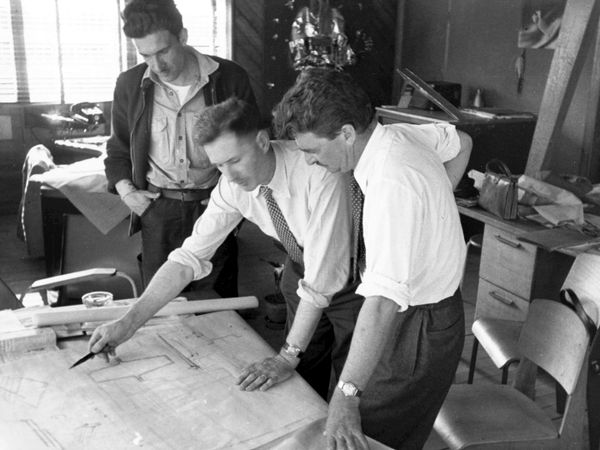
The Standard Chair (1934) by Jean Prouvé has evolved into one of the most famous classics of the French 'constructeur'. The seat and backrest of this understated, iconic chair are available in various types of wood, and the metal frame comes in different colours.
Standard Chair SP (1934) (Siège en Plastique) builds a bridge from past to present, revisiting Prouvé's iconic Standard chair without altering its form: the seat surface and backrest in robust plastic give Standard SP a contemporary look.
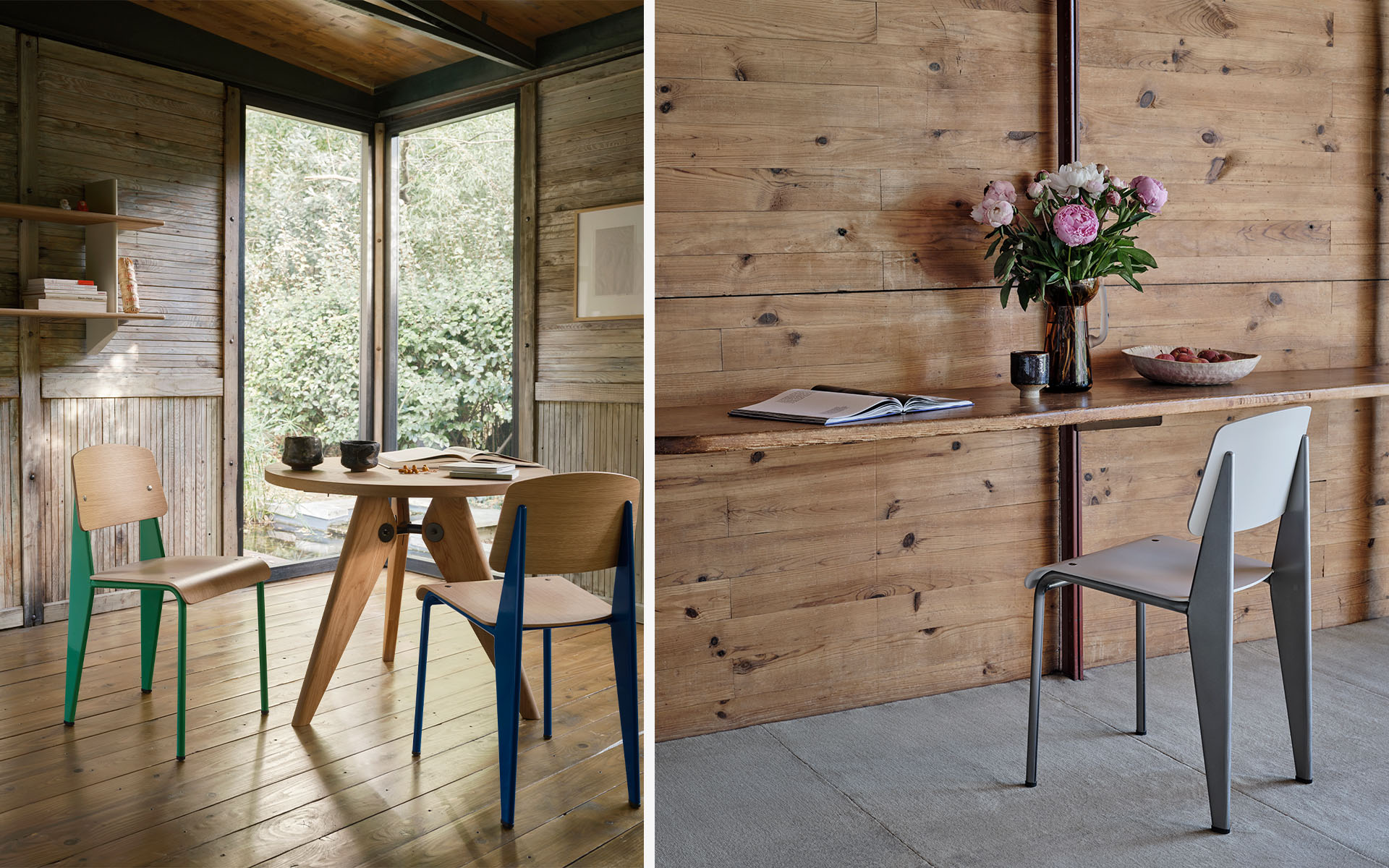
Fauteuil Direction Armchair (1951) is not only suited for use in home offices, where it makes an especially striking accent in combination with the Compas Direction desk. This armchair also cuts a fine figure in elegantly appointed lobbies, restaurants or waiting areas.
Developed by Jean Prouvé, the Fauteuil de Salon Armchair (1939) is a typical example of the distinctive structural aesthetic of his designs. The armchair's understated character suits a wide variety of interiors, and its ample upholstery and oiled, solid wood armrests emanate inviting comfort.

The Cité Armchair (1930) is an early masterpiece by the French designer and engineer Jean Prouvé. Originally designed to furnish the student residence halls at the Cité Universitaire in Nancy, Prouvé also used this comfortable, expansive armchair with powder -coated steel runners and leather belt armrests in the living room of his own home.
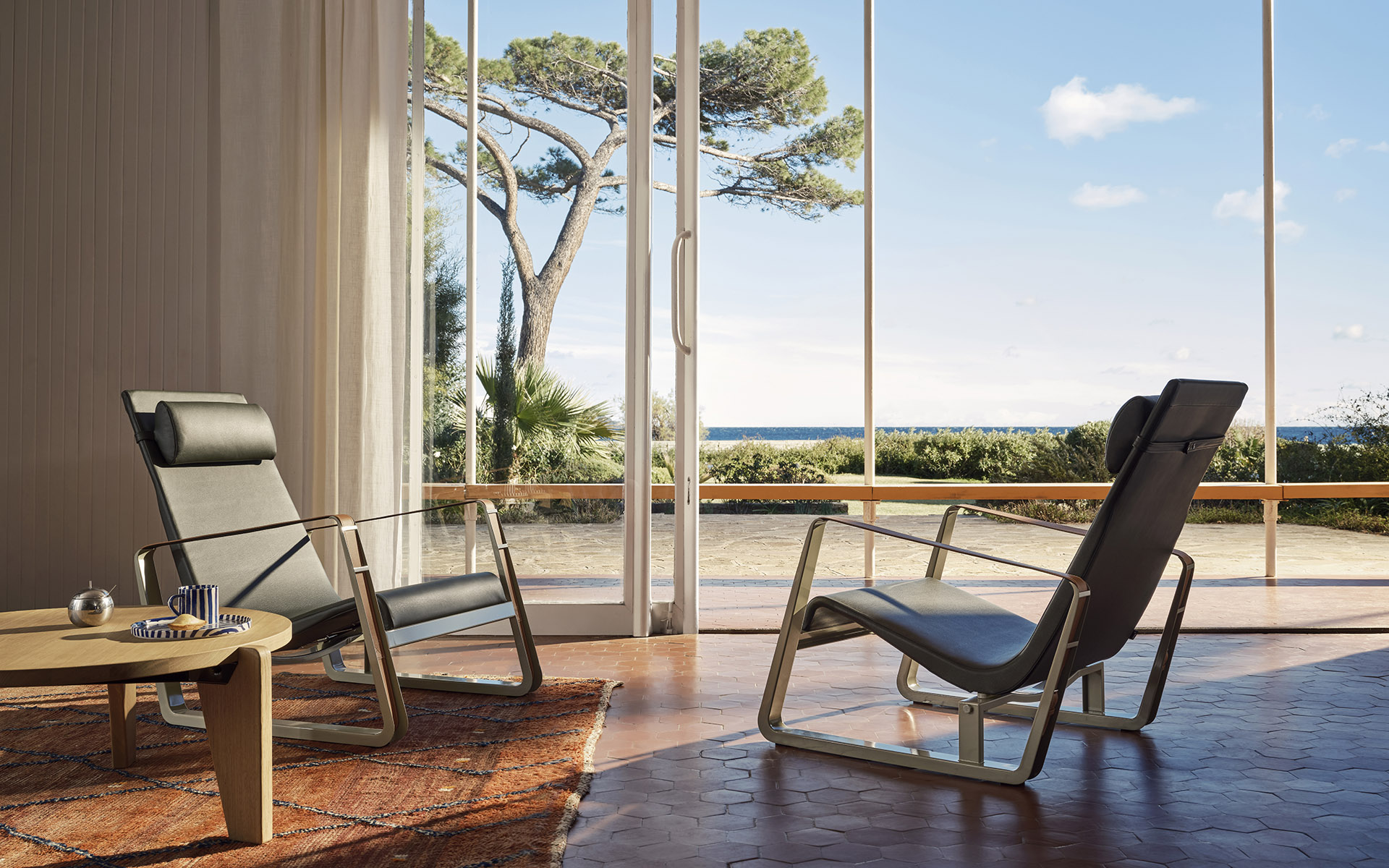
The swivel seat of Fauteuil Direction Pivotant Armchair (1951) is height adjustable, and the backward tilt mechanism can be adapted to the individual user's weight. These features are paired with the generous upholstery to ensure optimum comfort. Leather or fabric covers are available in many different colours, making it easy to find the ideal chair for any type of business workplace or home office.
The slender, elegantly splayed metal legs of the Compas Direction Desk (1953) by Jean Prouvé call to mind the hinged arms of a compass compas in French. Their design is based on engineering principles that typify the structural approach of the French designer and engineer. Paired with the oiled solid wood tabletops, they form a richly contrasting mix of materials in the home office.
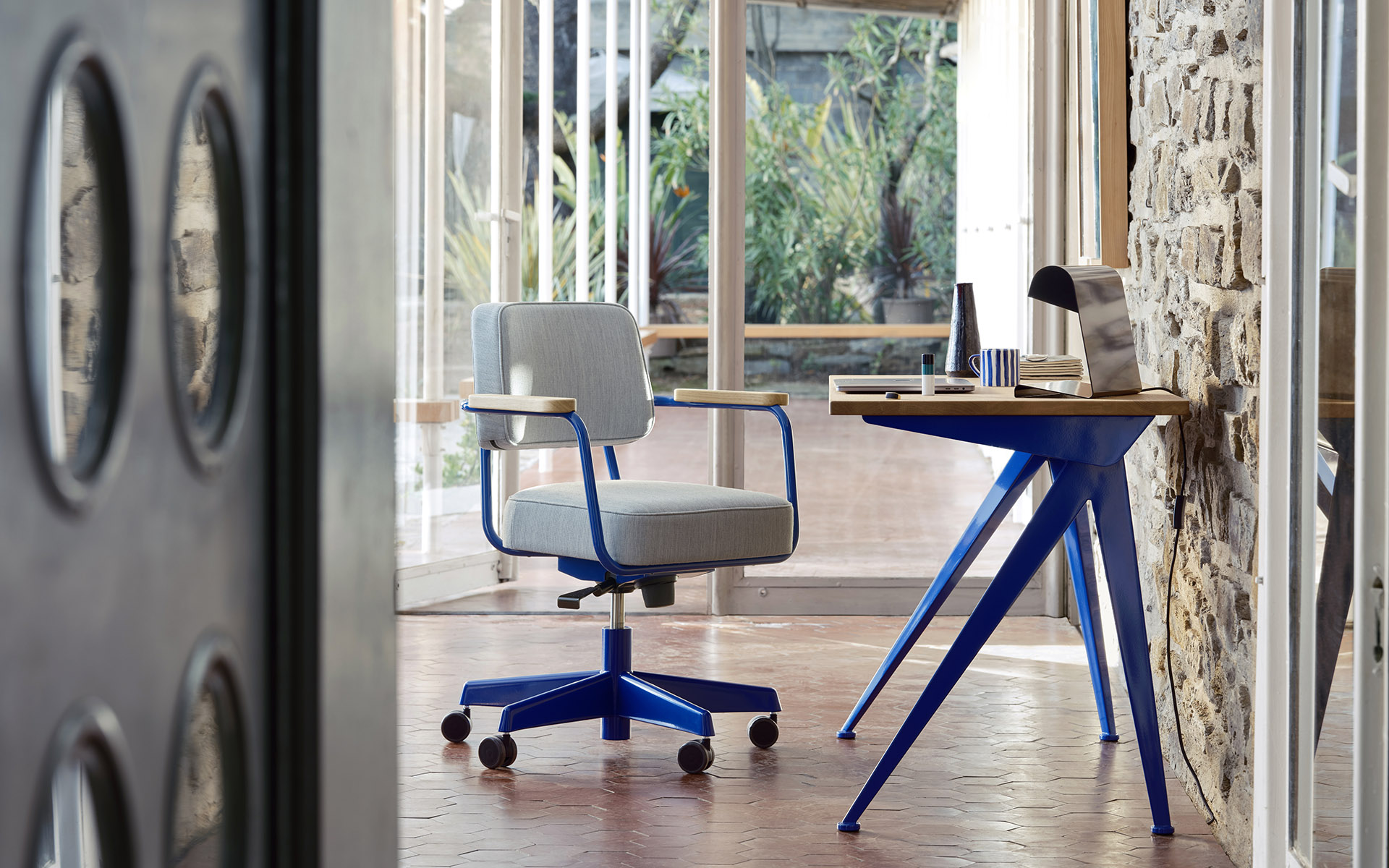
New historical colours. The colours Prouvé developed for the steel elements of his furniture and his architecture drew on various references from his Blé Vert, which describes the colour of young green wheat, to Gris Vermeer, which alludes to the grey tones in the work of the painter Johannes Vermeer. Yet according to Prouvé, who believed in the ‘Nature of a Material,’ only parts in danger of corroding should be painted, which is why he left wooden and aluminium elements in an untreated state whenever possible. However, beyond the practical benefit of rust protection, Prouvé was aware that he could use colours to instil his furniture designs with a certain aura.


